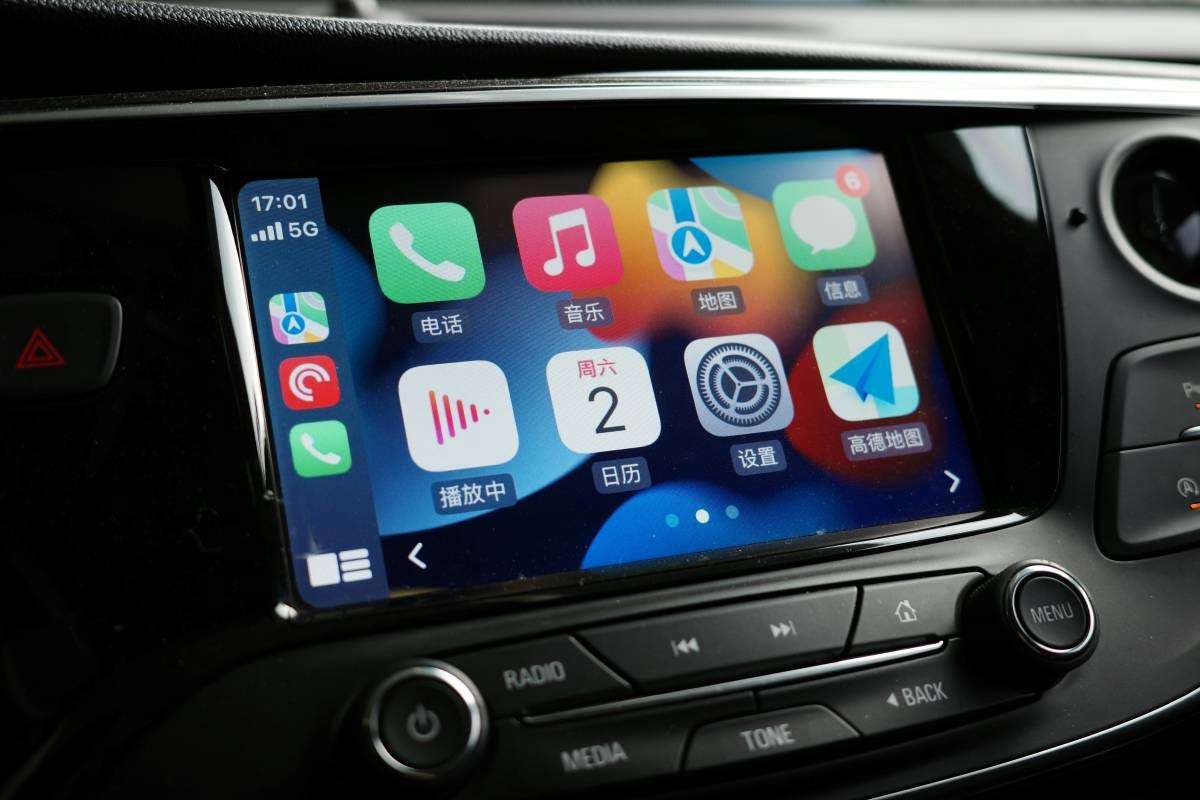CarPlay: A New Drive

Americans need cars - statistics shows that the absolute majority of the U.S. households, 91.7% had at least one vehicle in 2022 and even 22.1% of households had three or more vehicles. Most cars in US are white, black, gray or silver accounting for 78.9% of all the fleet - the choice most likely made because of “practical reasons”. In addition, every practical person must stay connected on the road and here CarPlay comes into play!
Origins
The big idea, the main motivation for CarPlay is simple: to make using an iPhone in a car safer and much, much easier. CarPlay brings a familiar, driver-friendly version of the iOS experience right onto the car's built-in display. Its purpose? To let drivers handle essential tasks like navigation, music, calls and messages with minimal distraction enabling to focus more on the road while firmly controlling the steering wheel.
Apple CarPlay was officially announced on March 3, 2014 at the Geneva International Motor Show emphasizing the smarter, safer and more fun way to use iPhone in a car. Manufacturers like Ferrari, Mercedes-Benz and Volvo were the first one to integrate the functionality and many others followed later. However, the CarPlay concept started much earlier and originated from Apple’s previous experiments with iPod integration in cars as far back as 2004. In 2008 Mercedes-Benz became the first automaker to offer iPhone connectivity paving the way for what would become CarPlay. The design of CarPlay was based on the iOS 4 feature called "iPod Out" which was produced after several years of joint development by Apple and the BMW Group's Technology Office USA and first shipped in BMW Group vehicles in early 2011.
Success
CarPlay serves as a bridge between an iPhone and a car’s infotainment system. By 2022, 98% of new U.S. cars included CarPlay, with 79% of car buyers considering it essential. This adoption did not happen by accident - it resulted from deliberate innovations in both: technology and strategy. So, what made CarPlay a hit?
A key innovation was its deep integration with Siri, Apple's voice assistant. Suddenly, a driver could just tell loud and clear: "Siri, get me directions to the nearest coffee shop," or "Siri, play my 90s playlist." This hands-free control was a game-changer. Another smart move was keeping the interface clean with big, easy-to-tap icons that looked a lot like an iPhone's home screen - making it instantly familiar and usable.
CarPlay’s initial app selection was limited to Apple’s native apps but strategic third-party integrations changed the game. By welcoming apps like Spotify and Google Maps (added later), Apple transformed CarPlay from a closed system into an open platform. This openness, while carefully curated, allowed users to bring their favorite services into their cars without compromising safety.
Compatible Apps
There is a long list of apps in the Apple App store compatible with CarPlay. Naturally, the most popular are apps in the navigation, music and news categories. However, one will be able to find messaging and productivity apps compatible with CarPlay. In addition, ChargePoint and PlugShare will help to find the closest charging spots, while SpotHero and EasyPark - will help to overcome the parking hurdles. CarPlay is available in 36 countries including US, Canada and many other countries in Europe and Asia. Not all features are available in all countries, however.
Is AI Taking Over Your Car?
Recently Apple unveiled its next-generation version of CarPlay, CarPlay Ultra. Available in Aston Martin vehicles at the very beginning CarPlay Ultra will expand to other car manufacturers over time.
This new iteration goes well beyond projecting your iPhone’s apps on a touchscreen. This time it also helps to directly control your car’s inner workings. The exact functionality is yet to be seen and tested but as we continue to experience the bumps and joys of the new, emerging technologies one thing remains clear: the road ahead is well worth the ride!
